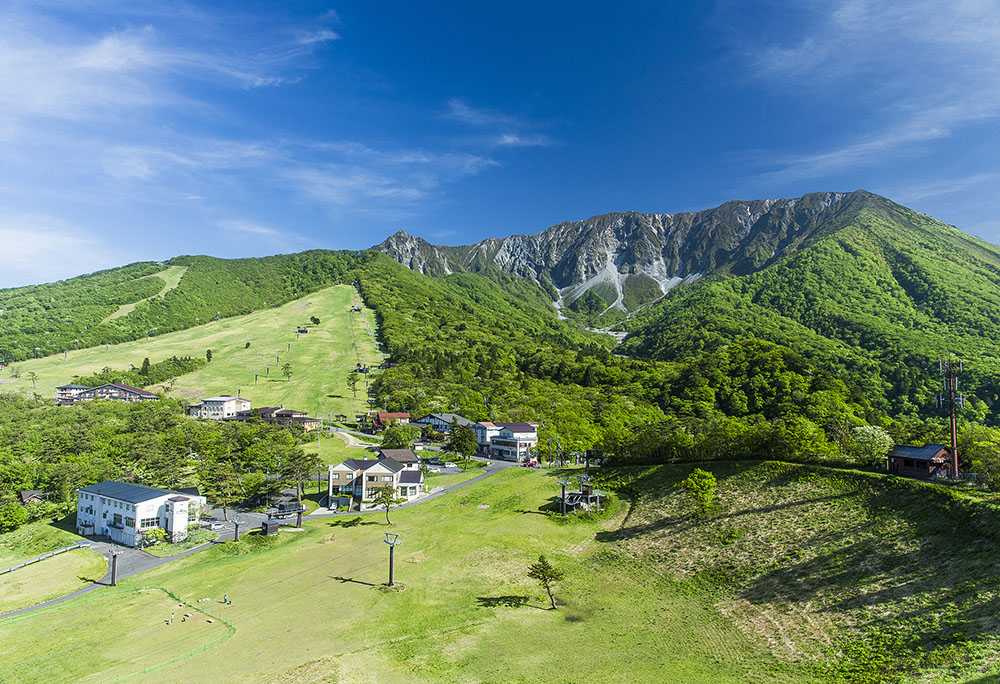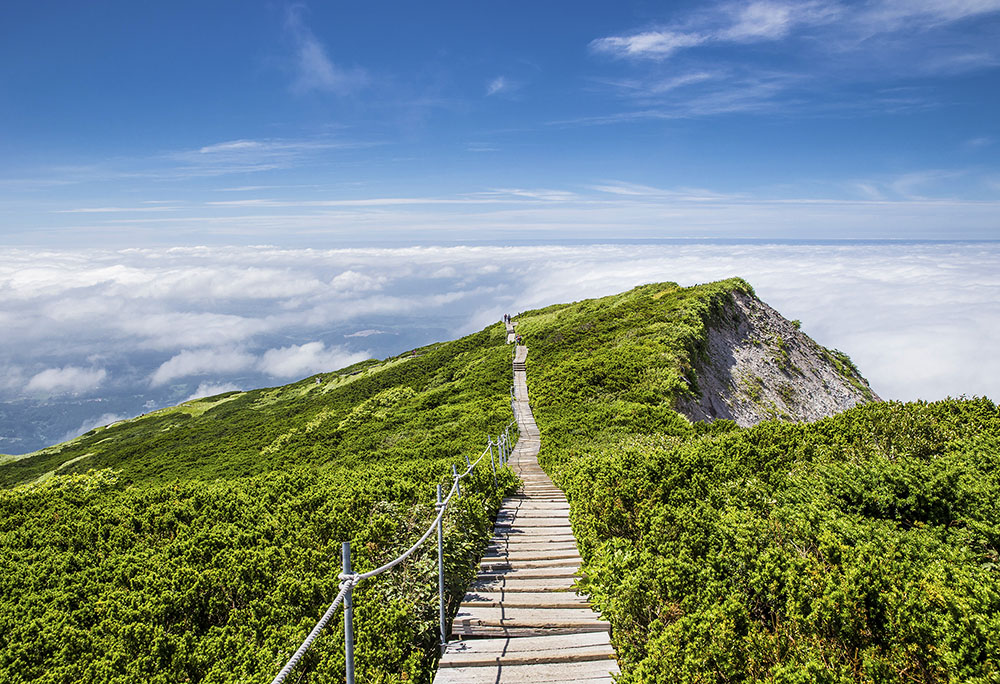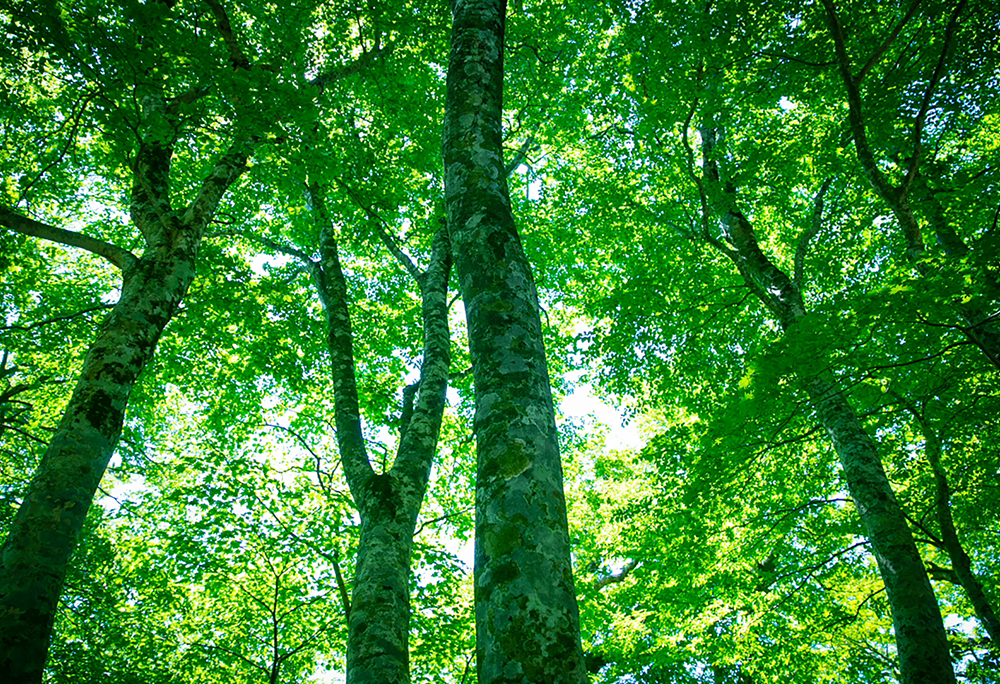
Mt. Daisen first appears in the “Land-Pulling Myth” recorded in the eighth century Izumo no Kuni Fudoki. This story relates a mythological interpretation of how the Shimane Peninsula was formed. The local kami deity believed his kingdom was too narrow and cramped, and decided to expand it by pulling together various pieces of free land from over the ocean. Mt. Daisen was used as a stake to anchor the new land on the east. The record also described Daisen as one of the oldest mountains where Shinto kami deities reside. Today, Mt. Daisen is home to one of the largest beech forests in western Japan, with many unique plants and insects named after the mountain. The lower half of the climbing trail passes through this beech forest, but at 1300 m elevation the vegetation shifts to low-growing shrubs. Above 1600 m the trail passes over boardwalks surrounded by a unique forest of dwarf Japanese yew trees (Taxus cuspidate var. nana). Climbers who reach the summit, at 1709 m the highest peak in the Chugoku region, are rewarded with a magnificent panoramic view.






